“Due to digital, music now has a terrible sort of housewifely tidiness. It's possible to fix absolutely everything”: Brian Eno on sonic perfectionism, Bowie and his new collaborative double album with Beatie Wolfe
We visit Brian Eno in the studio to find out more about Luminal and Lateral, a collaborative project with conceptual artist Beatie Wolfe
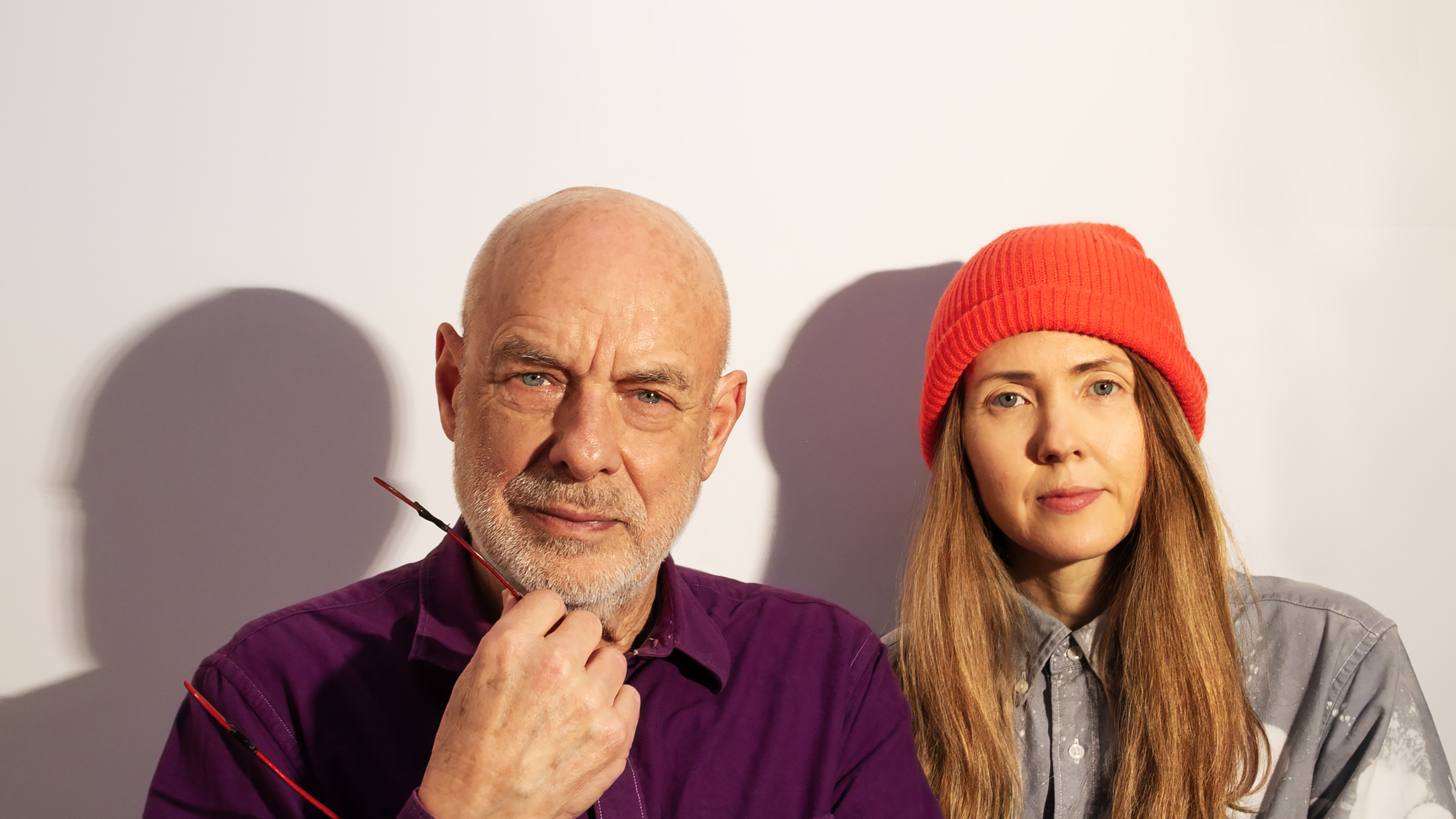
Pioneering songwriter, producer and visual artist Brian Eno has a lot in common with LA-based Anglo-American conceptual artist and activist Beatie Wolfe.
Both are environmentally conscious members of EarthPercent, a non-profit advocating for climate protection within the music industry. Connecting over Zoom prior to attending a shared environmental talk at SXSW and various meetings at galleries in London, the duo eventually decided to collaborate.
Alongside his multifaceted role as a member of Roxy Music, groundbreaking work on legendary David Bowie LPs Low, Heroes and Lodger, and productions for U2, Talking Heads and Coldplay, to mention but a few, Brian Eno’s contributions to ambient and electronic music need little introduction. Wolfe, likewise, is no stranger to the experimental and unconventional, having had her music beamed into space and helped create the world's first bioplastic record with Michael Stipe.
Making intermittent visits to Eno’s West London studio, the duo went back to basics using a badly-tuned guitar and an assortment of toys from local pound shops, while employing Eno’s Oblique Strategies card-based methodology. The result is two distinct yet interconnected albums: Luminal, described as "electric-country-dream-music," features vocals and lyrics by Wolfe; and Lateral, a purely instrumental work in the ambient, dreamlike style that has defined Eno’s career.
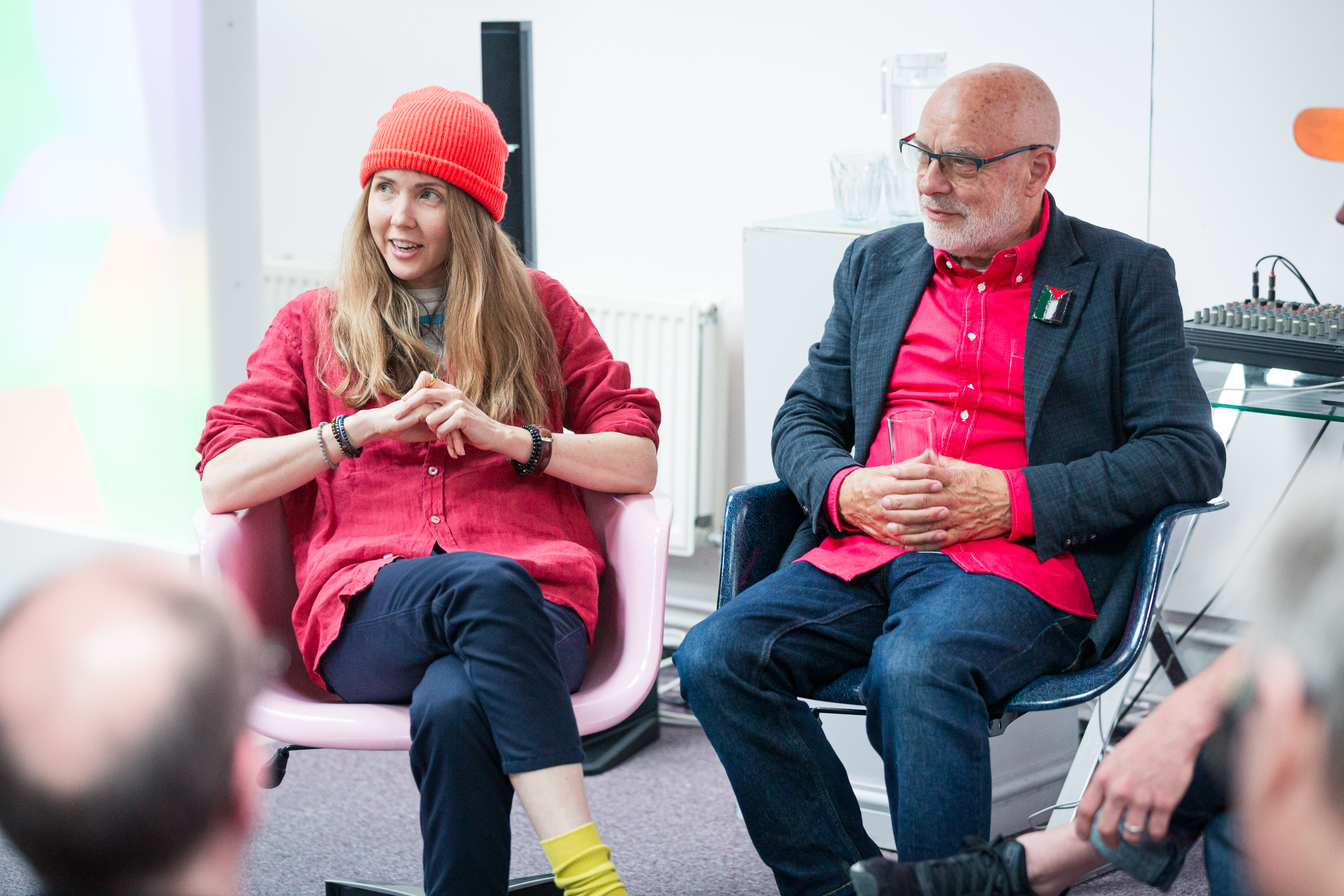
Having already felt familiar with Brian Eno’s West London studio from watching a YouTube video of him jamming alongside Leo Abrahams and Jon Hopkins in 2010, the modern-day reality was not too dissimilar - a large room with white-bricked walls displaying several pieces of Eno’s visual light art, with his small studio tucked discretely behind a side door. Less expected were the hordes of literary paraphernalia untidily crammed into rows of ceiling-high bookshelves. Typical of Eno’s modest nature, several silver discs were stashed well beyond human reach - or even view. For this innovator, the past is for learning from, not basking in.
As Eno puts it, “Play is how children learn; art is how adults play” - and his latest creative playground is a double album made in collaboration with American conceptual artist and composer Beatie Wolfe. During a curated Q&A session, the pair shared a full playback of the album and recounted how their partnership began. “We bonded over a hatred of NFTs and kept getting emails from people saying we should be among the first to do something innovative with them,” Wolfe exclaimed, adding: “We thought they were drinking the Kool-Aid.”
After several Zoom conversations and a joint talk at South by Southwest, their paths crossed in person when Wolfe had an exhibition at Somerset House while Eno was showing his light paintings at the Paul Stolper Gallery. “We visited each other’s shows and then came here and played Toad in the Hole in the hallway, which was everything I’d ever wanted in life,” said Wolfe.
Want all the hottest music and gear news, reviews, deals, features and more, direct to your inbox? Sign up here.
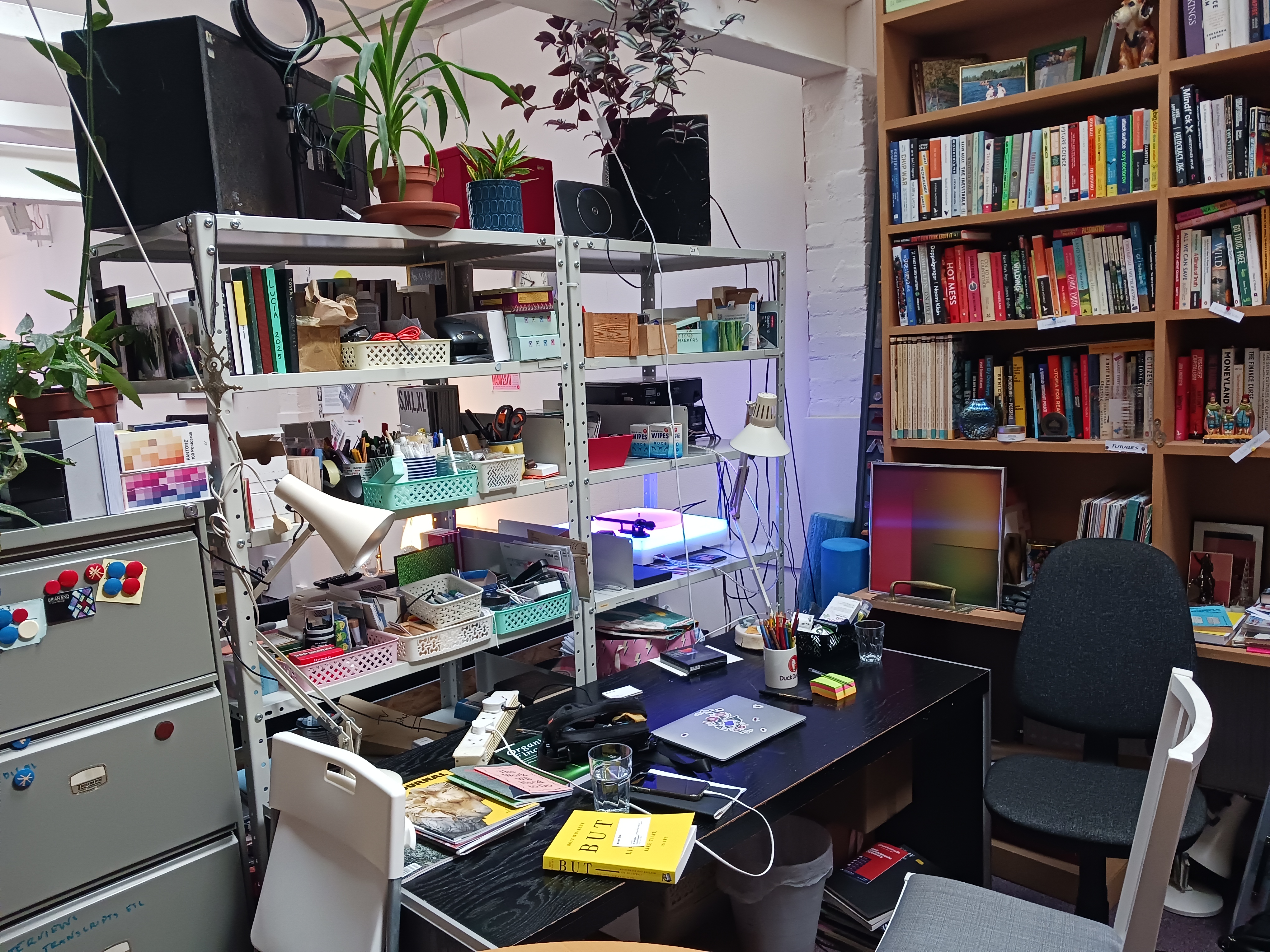
Although Wolfe hadn’t specifically come to Eno’s studio to throw brass coins at a lead-topped table with a hole in the centre, there was nothing specific planned in terms of how they would make music together. Like most who step into Eno’s studio space, collaboration is largely about treading into the unknown. “It was the most Spartan line-up of extremes - just the two of us with an electric guitar whose strings had only been changed once in 40 years,” explained Eno.
“Being here was the most important part, and that’s not a completely facetious comment because part of the idea was for the two of us to just go into a studio and make something out of whatever’s there. That remained the principle, thinking every day is a new day and we'll do something today that we wouldn't have done yesterday or tomorrow.”
The album Luminal, played to the assembled audience in its entirety on a 1,000 watt Bose PA system, is described as “electric-country-dream-music.” Washed psychedelic guitars shimmered through the room alongside Wolfe’s melancholy vocals, with Eno’s electrically charged production adding a brisk digital crackle. The accompanying album, Lateral, played both prior to and following the event is classic Eno, as sumptuous synth drones and processed guitars wind silhouette-like through a static soundscape, interrupted by the occasional inflected string or energy swell.
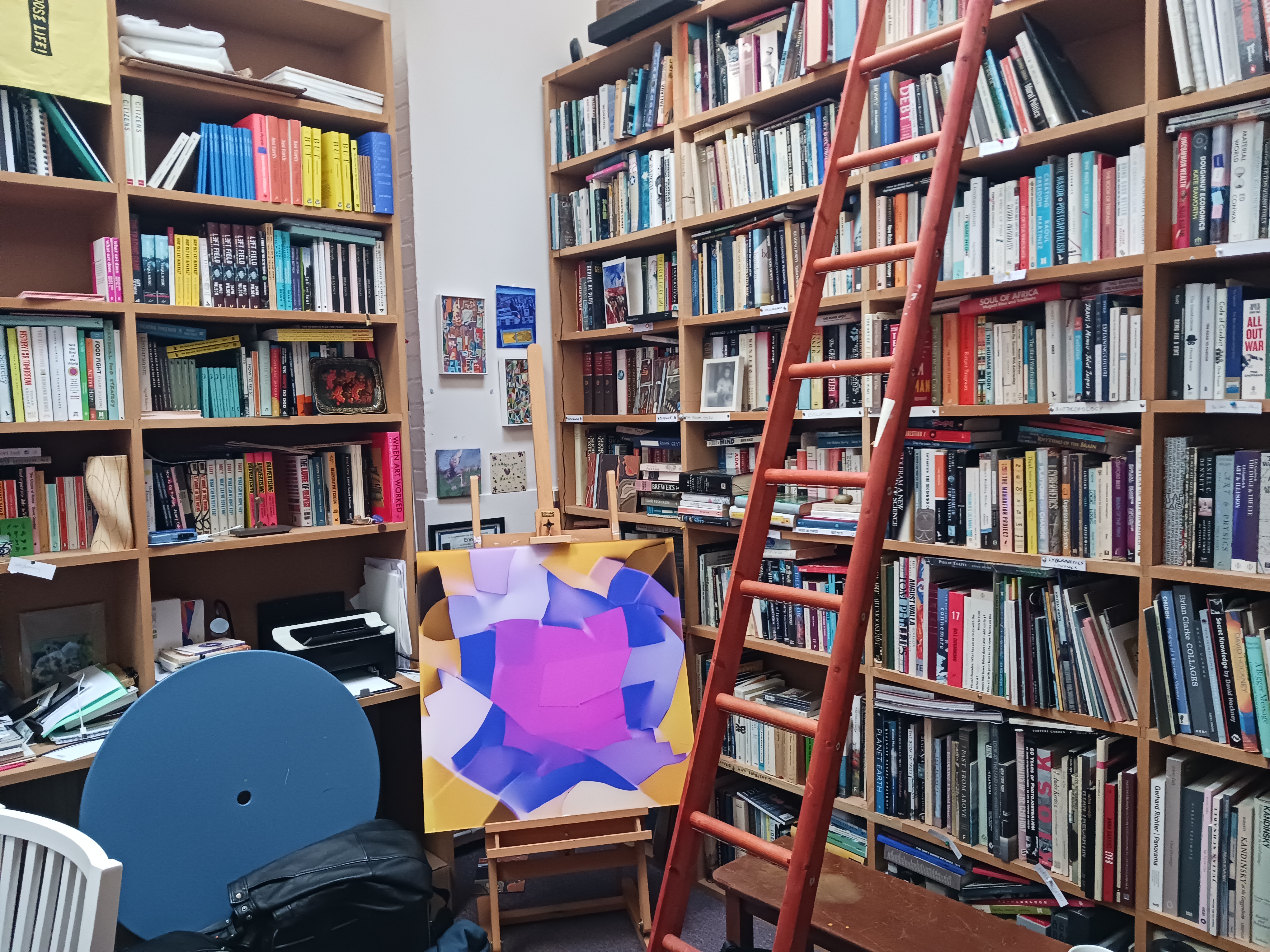
If both albums were made at the same time, did the process overlap or were they recorded during separate phases? “There were lots of things happening at once until we ended up with more non-songs, which we call ‘nongs,’” mentioned Beatie.
“There's obviously this whole world of different textures, environments and landscapes that Brian has been brilliant at bringing into the public awareness, but we weren’t really conscious of travelling down a particular trajectory, we were just making all this stuff that mushroomed every time we got together. By coming into Brian’s studio and using a hummy guitar that’d only been restrung once, you're removing the ego and getting back to simplicity and economy. Like when you're a kid and can turn a matchbox into a whole world.”
Eno went on to explain how their creative approach was maintained by revisiting his card-based Oblique Strategies method, famously used during the recording of David Bowie's Berlin album triptych: “We would each pull one without revealing to the other person what it said, operating under whatever restrictions or freedoms the card gave us while trying to bend the session so that it made our card work. It produced some interesting results. For example, if Beatie had a card that said ‘destroy everything’ and I had one that said ‘change nothing’ we had to continue with immaculate consistency despite working at cross purposes”.
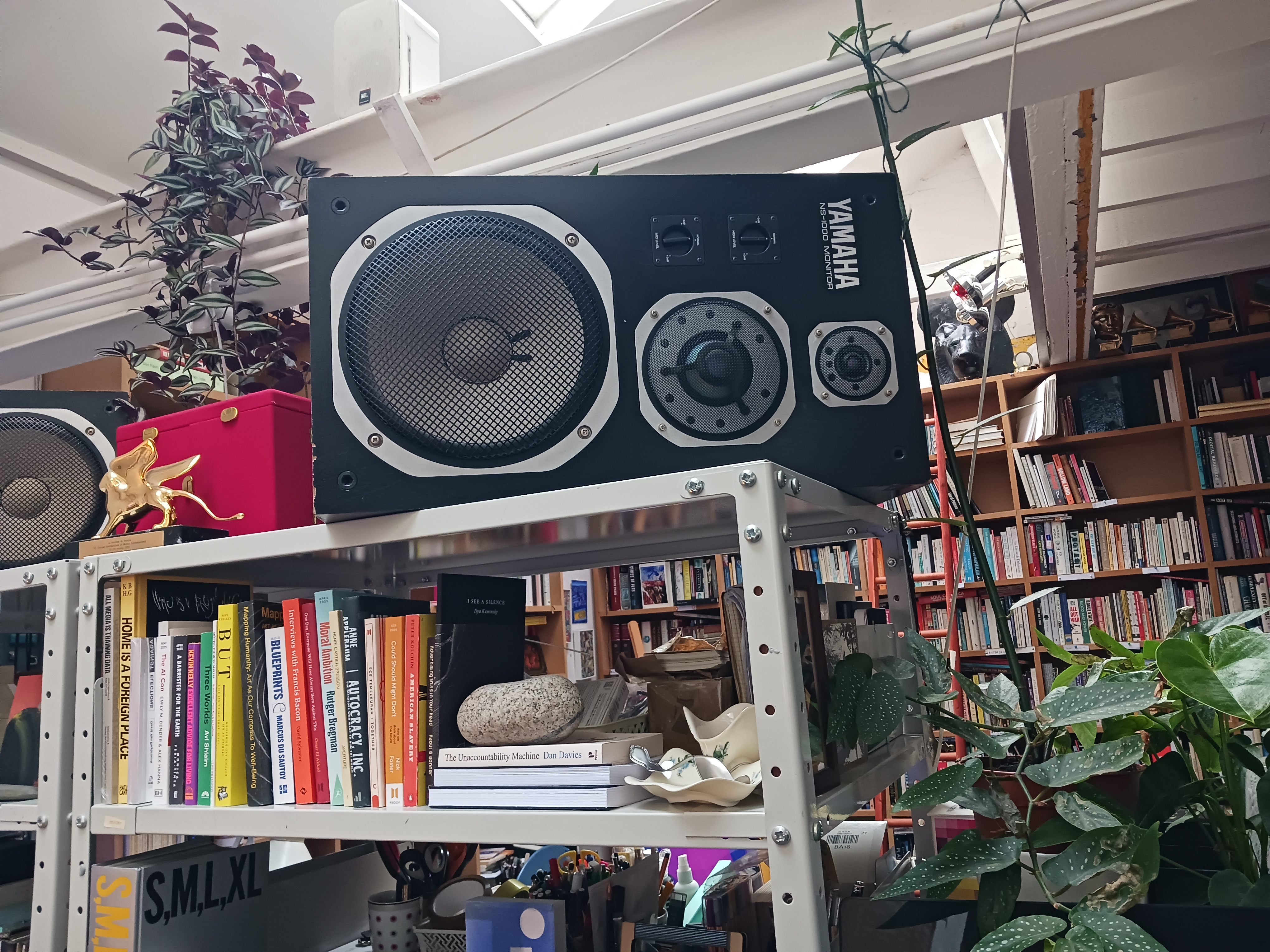
Wolfe added: “It never became just another day in the studio. After the toad tossing, we made the first two pieces of music and Brian was like, ‘Oh, let's carry on tomorrow’, but I was leaving for LA. Obviously, that distance created a stop gap, but when I came back everything happened so fluidly. It sounds like such a trite thing to say, but it was constant fun and we were doing things only because they were enjoyable, not with any agenda.”
Eno’s thoughtful approach to creativity emphasises emotion over technique, offering a pointed critique of how many musicians engage with the creative process: “When making music, you'd think that the first question people would ask themselves is, ‘Am I getting any feeling from this?’, but funnily enough a lot of people don't, they just go through the mechanics of doing something that seems like music. Sure, there's an A chord, a D minor, another and then another - and that all seems like making music, but it's just a routine.
“If Beatie and I weren't getting a feeling from something, we moved on or changed it in some way. I always want to be having feelings about music - strong feelings if possible, and new mixtures of feelings, like when something is pretty but ominous or awkward and lovely. Feelings like that don’t have names - they're too complicated; the colour equivalent would be like saying ‘lavender green,’ but you can't think of what that would mean.”
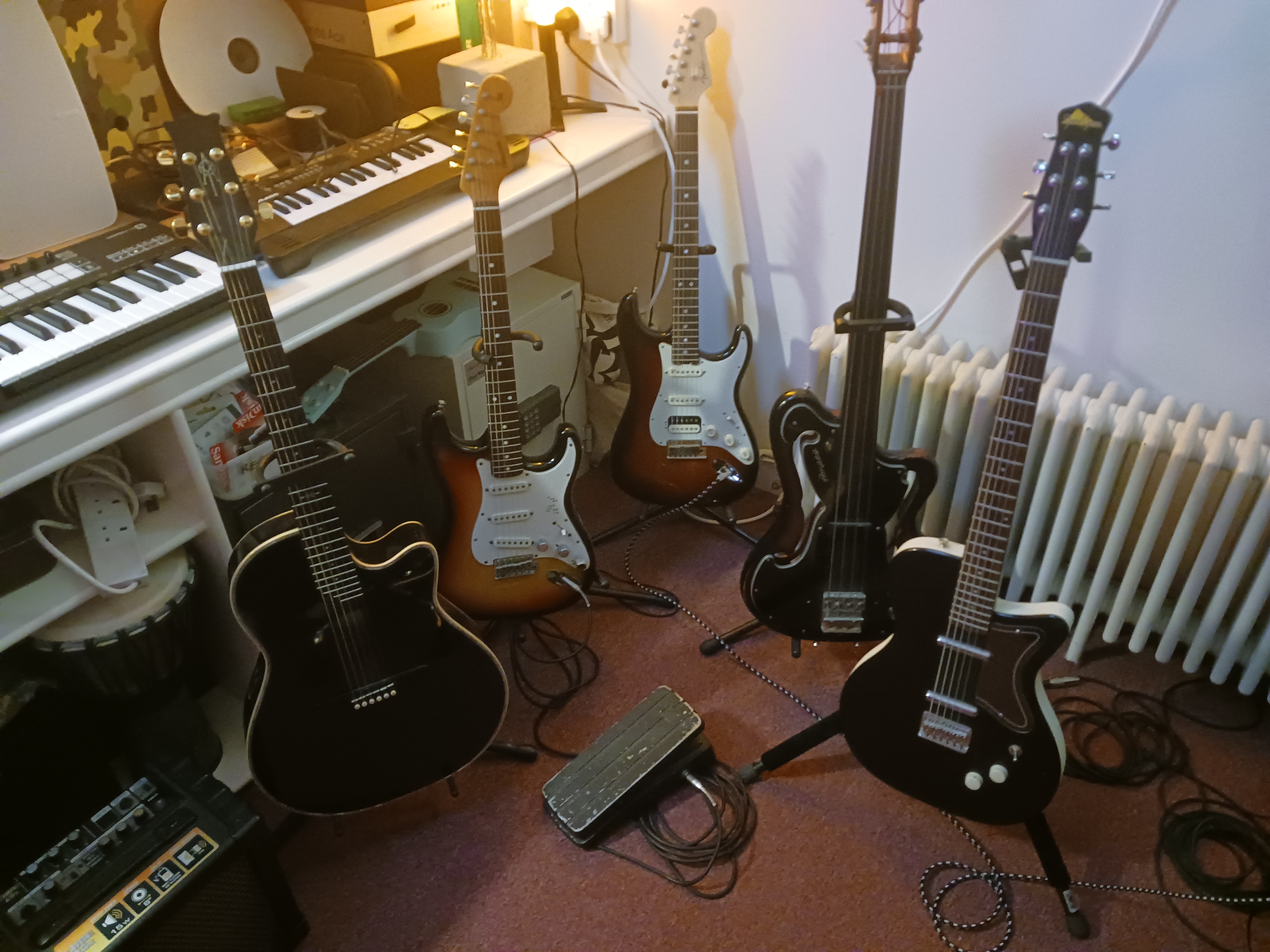
What feelings then did Wolfe remember emerging from the ambient album Lateral as it began to take shape? “Big Empty Country is like a land you want to live in that isn't all pretty and peaceful – there’s some sort of edge there. Interestingly, the piece was initially eight minutes long and on almost exactly the same day while Brian was on a train and I was walking in Griffith Park, we looped it eight times and wrote to each other saying this piece of music should be around an hour long, which was so synchronistic and bizarre.”
Eno continued: “I kept getting to the end of the eight minutes thinking I just want to hear it again, so I stuck several of them together and it became a generative piece. Actually, I only regenerated it for the digital version - the vinyl version is the loops-generative version. Anyway, that’s something that the musicologists can argue about.”
One thing musicologists will rarely argue about is Eno’s foundational influence on ambient music. He didn't just contribute to the genre; he essentially defined it, coining the term with his 1978 album Ambient 1: Music for Airports, which he described as music designed to induce calm and create a space to think - to be both trivial and interesting.
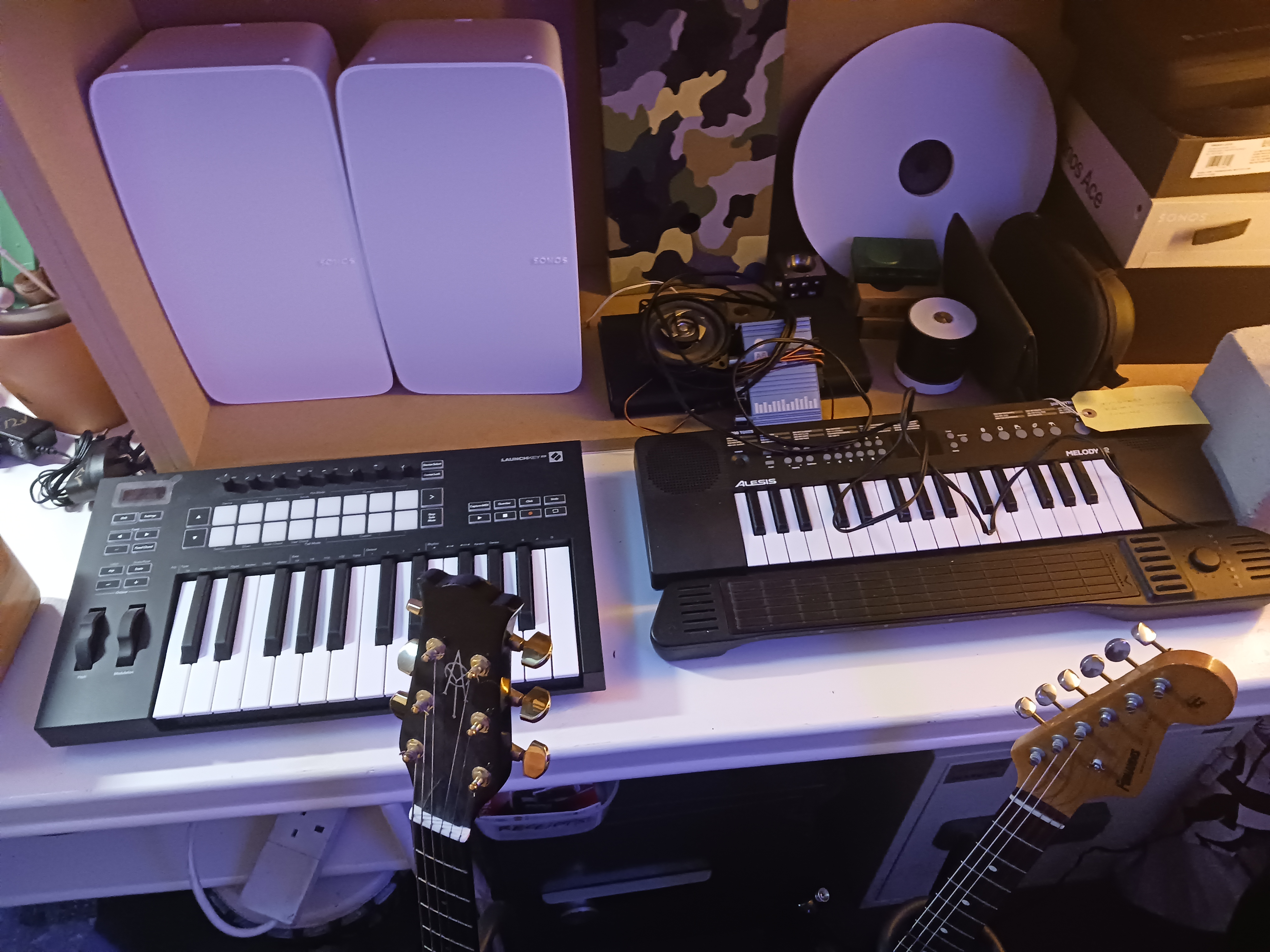
“An element that's always been important to me is emptiness - deliberately leaving a thing so there's space to imagine something moving around it. I’ve walked into sessions recently where people that used to be limited to 24 tracks now have over 400 full of shite. You get this feeling that they must be really bored to want to do that. Fiddling with all that stuff is just making work for yourself, so now I prefer listening to recordings that have a slight sense of carelessness and haven’t been tidied up.”
There's an incredible industry of fascinating plugins that you can waste your life on. It's quite a nice way to waste your life, but it is wasting your life
Eno compares his fondness for unkempt music to other forms of art, specifically painting: “I started life as a painter and in painting you get so many different kinds of texture. A finished painting could be one with lots of splashes and dribbles and bits that don't reach the edge of the canvas, and that's all fine, but in music the tendency is for somebody to tie it all up. Due to digital, music now has a terrible sort of housewifely tidiness. It's possible to fix absolutely everything to some kind of platonic ideal of what a C sharp bass note should be, and there's an incredible industry of fascinating plugins that you can waste your life on. It's quite a nice way to waste your life, but it is wasting your life.”
When asked whether Wolfe contributed equally to the electronic elements, given their creative process began with guitar, she explained: “We were doing a lot of that together, so there wasn't a line in terms of staying in a corner, but I'll say that Brian is an incredible guitarist. This isn't blowing smoke, but he’ll do the most unusual things that you wouldn't typically do with a guitar and get these incredible sounds. It's really about finding the right colours, and it doesn’t matter how you do that.”
Eno modestly followed Wolfe’s train of thought: “Beatie can handle the studio perfectly without me, whereas I can't play guitar so I have to think of other ways of making music. The instrument we used most of the time was the Fernandez, which is a Fender copy, but a really good one. I bought it 44 years ago for Robert Quine of Richard Hell & the Voidoids. He had about 56 guitars and really wanted that one but couldn’t afford it, so I bought it as a sort of safe keep, thinking he could have it back whenever he wanted it, but he unfortunately died so I inherited the Quine Eno guitar.”
Surprisingly, or maybe not considering Eno’s penchant for creating recreational diversions, other sound sources would be elicited throughout the duo’s working process. “One rule was that we had to get all of our instruments for the day from the pound shop, so we ended up with funny things like rattles and elastic bands,” exclaimed Eno. “Or from the dodgy electronics shop nearby: we got a whistle and recorded the sound of someone’s wind-up watch,” furthered Beatie.
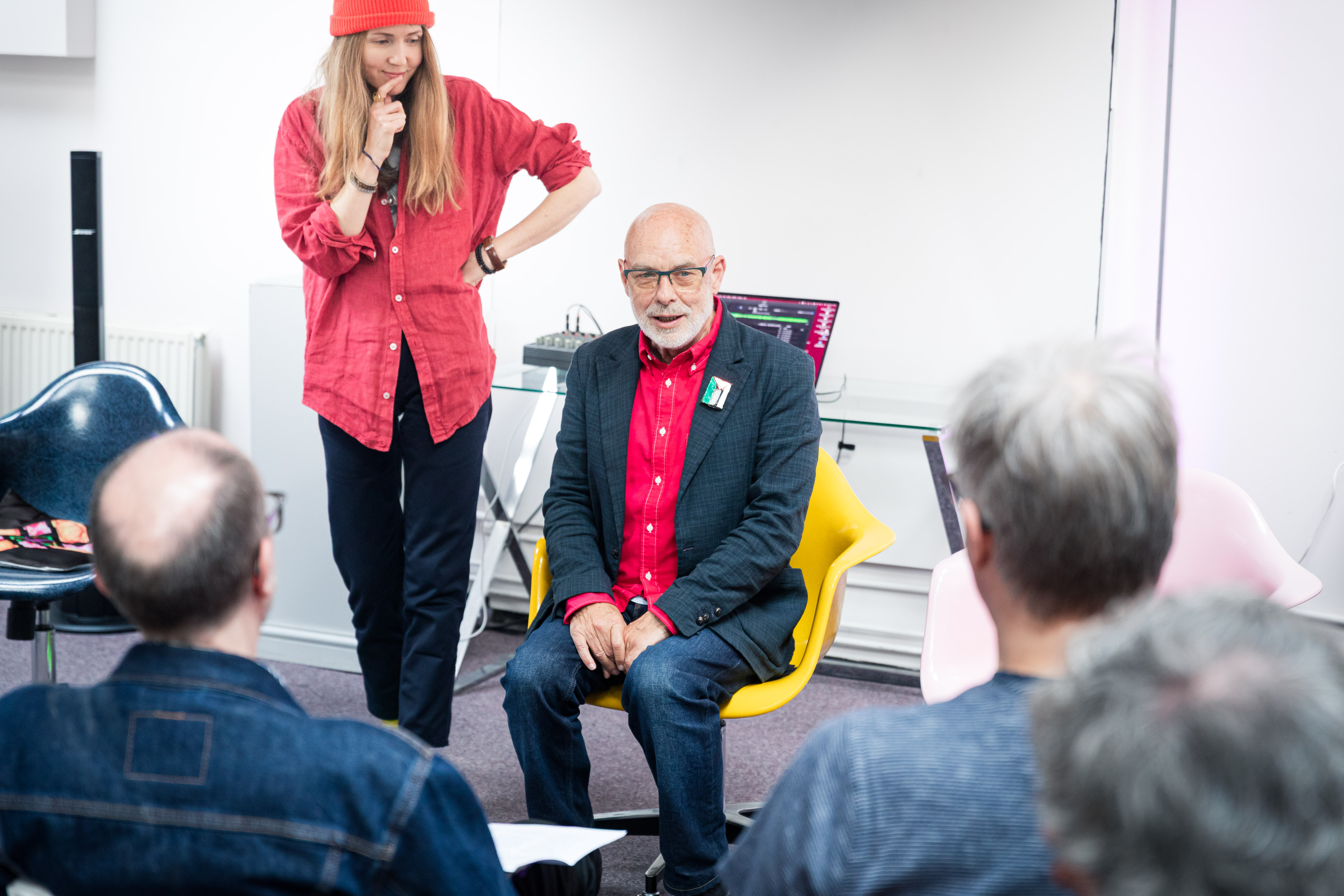
Having previously mentioned how a proliferation of plugins can have the capacity to distract, Eno avoids that compulsive habit by using his extensive audio archive to discover new sound sources. “In my archive, I have something like 11,000 pieces of music, and most of them are unfinished. It’s an attempt to create a process whereby, instead of starting something and thinking, okay, I'm going to finish that now, I’ll hide it knowing that I might be surprised by it in the future. Because I often work late at night, I often make something, stick it in the archive and forget about it - sometimes for 30 years. Then I’ll often find something and think, ‘Why didn't I ever do anything with this?’”
To assist in his search for new ways to explore old material, Eno worked alongside former collaborator and technical assistant Peter Chilvers to create a more interactive sound archive. “For instance, I can say I want playback, I want sound bites, I want to shuffle them, and I want them to be 15 or 20 seconds long, and suddenly I’ll hear something that I think’s pretty interesting that I can dig out. That was very successful in giving me a lot of new old material to work with, but then I said to Peter, wouldn't it be good if I could just get three, four or five tracks playing all at the same time? So we invented the Shuffler, which looks through my whole archive, chooses three pieces at random and allows me to restrict how it makes those choices.
“For example, I can ask it to choose from three playlists or choose from everything, knowing that I'm going to hear a piece that I've never heard before by clicking one button – and I can say that with confidence because there are about a trillion possible combinations. I’ll create all these different elements, which sound completely incompatible when you hear them separately, but sometimes you get combinations that are so unusual and complex, and that’s been a big source of joy for me - I can probably say that I have more pieces of music than any other composer in history.”
I like the surprise of just hitting a button and suddenly there's a whole new piece
When shuffling sections of old material and combining them, is the archive pitch shifting the music in any way? “No, but we've just got a new version which is really interesting. At the moment, each loop will go on forever but because the loops are asynchronous they won't fall in the same places, so these are ever-evolving pieces. In the newest version, there'll be an indeterminate gap, so when it gets to the end you can set a parameter that says repeat immediately or repeat sometime within a minute or similar. I can also open the archive in Logic to treat, EQ or create a more complicated version, but I prefer it simple and like the surprise of just hitting a button and suddenly there's a whole new piece.”
Eno’s studio proudly features a pair of vintage Tannoy SRM10Bs. Is his continued use of these 55-year-old speakers merely a matter of his ears being attuned to their sound? “If you're making music, I always think you want the nicest possible experience. You don't want a Genelec-critical experience telling you there are lots of hisses and crackles - I can't bear those analytical speakers.
“These are lovely speakers – so warm and welcoming, and completely uncritical, but probably not a very good idea if you’re a proper engineer. In the main room, there are some speakers made by Canon that I found about five years ago in a skip in Kilburn. Canon never made bloody speakers, so I think they must be the only example, but they’re fabulous. They work on a different principle, where the sound radiates onto a cone which distributes it in space.”
By now, access to the ‘Godfather of Ambient’ had gone on far longer than expected, but such auditory gold only encouraged further lines of questioning. As a producer, what's the biggest turnaround where he saved something that was going really badly wrong? “I can tell you one with U2,” Eno enthused.
“They were working on a song that they’d revisited many times and everybody knew there was something beautiful about it, but it just sounded sluggish and wouldn’t work. I’d just been listening to Klaus Dinger - the German drummer who pretty much played one beat for his entire career, called motorik, so I used that to immediately double the tempo of the song and as soon as that happened everyone knew it was a hit. The song was Beautiful Day.”
Terrifyingly, I met a brain surgeon who said he used the ‘destroy everything’ card
On similar lines, was there ever a time where his Oblique Strategy caused real chaos? “I don’t know whether this really happened, but I heard a story about the Manic Street Preachers using Oblique Strategies. They were working on a 24-track, which had a kind of long cable connecting it to the desk and the strategy said “cut a vital connection”, so somebody did and they immediately lost eight tracks and had to carry on with the session without them. Terrifyingly, I met a brain surgeon who said he used the ‘destroy everything’ card - that’s not something most people would want to hear, or find out airline pilots were trying.”
And what of Eno’s collaboration with Bowie - was his Oblique Strategy methodology influenced by the latter’s famous lyrical cut-up technique? “David and I developed a lot of those ways of working together. In fact, one of the most successful that I wrote about in one of my older books is that I was very aware that he was a playwright really. He wrote scenarios, which his characters then sang about, so he was inventing people. I said, why don't we take that further and make each of the musicians a character and give them a sort of description?
“I would say to the bass player, for instance, you're playing in a post-funk electronic band on the outskirts of Tripoli in 2025 and the music you loved growing up was ‘this’ and you’re particularly influenced by ‘that’. Some of them created very cool stuff and held a vibe while others were impulsive, but it was really exciting and they loved doing it. It’s funny, because if you tell people they’re playing a game they'll do all sorts of things and I’ve always tried to move away from being too serious. We’re trying to write a song, so let's play a game and see what happens - if nothing else, you have a good laugh and that puts you in a much better mood to carry on.”
Brian Eno and Beatie Wolfe’s Luminal and Lateral are out now on Verve Records. For more information, click here.
You must confirm your public display name before commenting
Please logout and then login again, you will then be prompted to enter your display name.